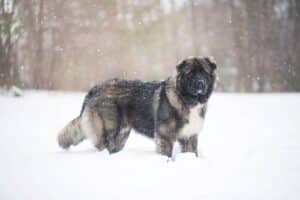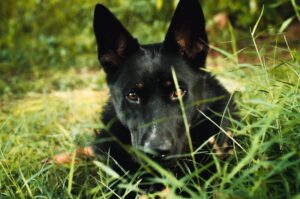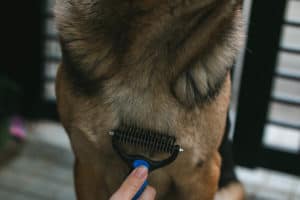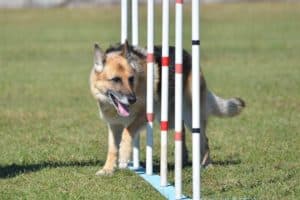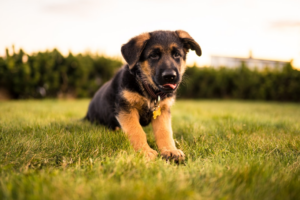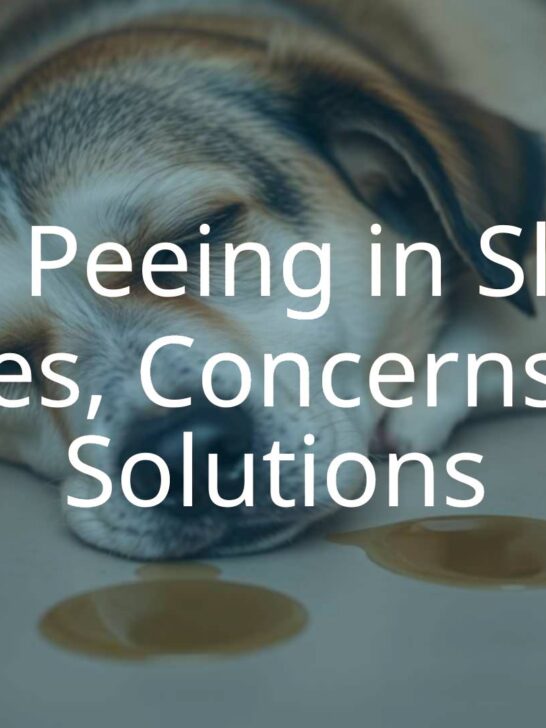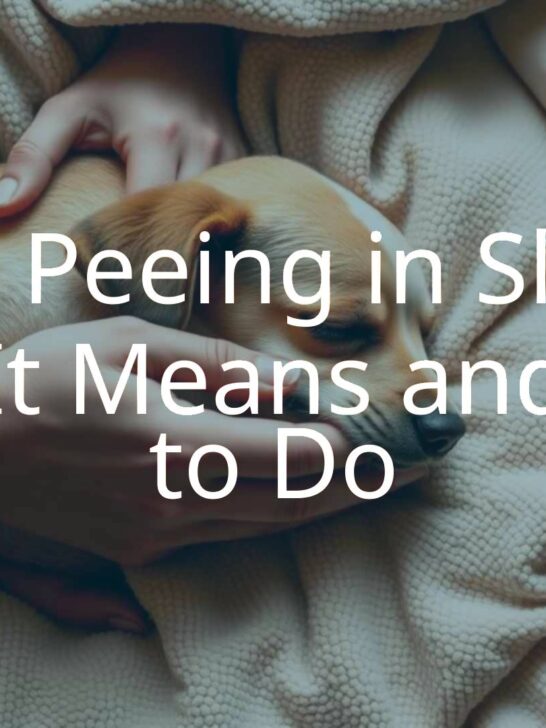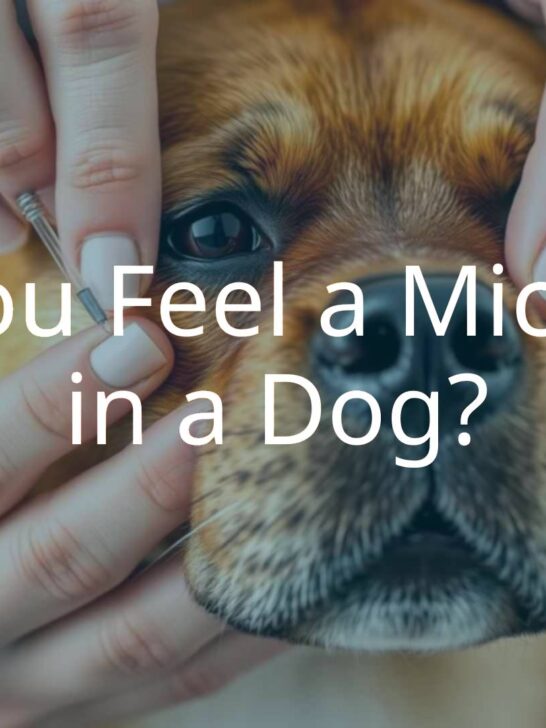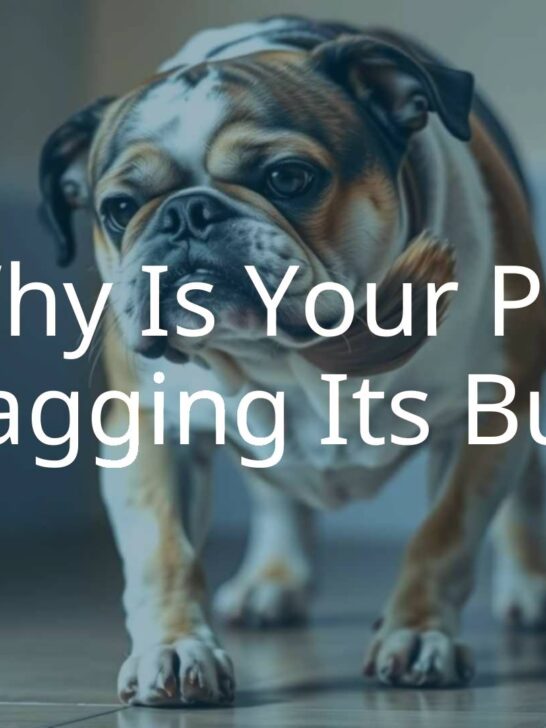What to Do if Your Dog Has Been Stung by a Wasp
Seeing your dog get stung by a wasp can be worrying, but most of the time, it’s not a serious problem. Usually, a wasp sting just causes some pain and irritation that goes away on its own. However, sometimes a sting can be more serious, especially if your dog is allergic or was stung in a sensitive spot. This guide explains what to look for, what to do right away, and when you should take your dog to the vet if they get stung by a wasp.

What Happens When a Dog Gets Stung by a Wasp?
When a wasp stings your dog, it injects venom into their skin. This venom causes the reactions you see. Unlike bees, which leave their stinger behind and can only sting once, wasps have smooth stingers and can sting several times. This means that your dog might get more venom with wasps, which can cause a bigger reaction.
The first thing you’ll probably notice is your dog yelping and showing pain. The area will often swell and turn red. These signs are usually mild, but it’s smart to keep an eye on your dog. The amount of venom and your dog’s own sensitivity can lead to different reactions. Knowing the difference between wasp and bee stings can help you decide what to do next.
Bee vs. Wasp Stings in Dogs
Bee and wasp stings are different. Bees leave their stinger and venom sac stuck in the skin. The stinger keeps pumping venom until you remove it, so you should scrape it out quickly-don’t pinch it, or you’ll squeeze out more venom.
Wasps don’t leave their stinger behind and can sting again. This means there’s a risk of your dog getting stung more than once. Also, wasp venom is alkaline, while bee venom is acidic; however, the main thing is to keep your dog comfortable and contact your vet if needed. Don&t rely on home remedies-ask your vet for advice.
Common Places for Stings
Curious dogs often get stung on their nose, because they sniff at everything. Ears, eyes, and paws are also common spots, since these are easy for insects to reach.
Paws are at risk if your dog steps on a wasp. Dogs that try to catch wasps might get stung in the mouth or throat-this can be dangerous if the swelling blocks their airway, so be very careful.
Symptoms of Wasp Stings in Dogs
Watch your dog closely after a sting to see how bad the reaction is. Most stings cause only mild symptoms, but allergies and stings in certain places can be much worse.
Knowing the difference between a mild and a serious reaction is important for your dog’s comfort and health. Some dogs are more sensitive, so even one sting can be a big problem for them.
Typical Symptoms
- Sudden yelp or whine
- Swelling, redness, and warmth at the sting site
- Biting, licking, or pawing at the area
- Limping if stung on the paw
- Drooling, especially if stung near the mouth
- Hives or raised bumps on the skin
Most mild reactions settle down in a few hours or a couple days. If the symptoms last or get worse, contact your vet.
Stings on Paws, Face, and Inside the Mouth
Where your dog gets stung makes a difference. Stings on the paws often cause limping and swelling but are usually not as dangerous. Swelling on the face, especially the nose or around the eyes, can look scary and may get worse.
A sting inside the mouth or throat can cause swelling that makes it hard for your dog to breathe. If you think your dog has been stung in the mouth or throat, go to the vet right away even if the initial symptoms don’t seem bad.
Signs of a Serious or Allergic Reaction
- Hard time breathing
- Pale gums
- Coughing or wheezing
- Vomiting or diarrhea
- Weakness or collapse
- Hives or swelling away from the sting
- Shaking, confusion, or seizures
If any of these happen, get your dog to a vet immediately-quick treatment can save their life.
Risks and Problems from Wasp Stings
In most cases, wasp stings are not too serious, but sometimes the risks are bigger. Knowing what can make a sting more dangerous helps you respond faster.
| Situation | Risk Level | What To Do |
|---|---|---|
| Single sting on paw or nose | Low | Watch for mild symptoms; home care is usually fine |
| Sting inside mouth or throat | High | Go to the vet immediately |
| Multiple stings | High | See a vet quickly; risk of toxic reaction |
| Dog with allergy history | Very high | Be ready to go to the vet at the first sign of a problem |
Dogs Most at Risk
- Dogs with past allergic reactions to stings
- Puppies, due to their size and curiosity
- Dogs with breathing or heart problems
Watch these dogs more closely and act quickly if anything seems wrong.
Anaphylaxis: Emergency Signs
- Severe trouble breathing
- Collapse or fainting
- Very pale gums
- Lots of vomiting or diarrhea
- Swelling that spreads or affects the whole face/neck
If your dog shows these signs, take them to a vet or emergency clinic immediately. Fast action can save their life.
What To Do Right After a Wasp Sting
If your dog is stung by a wasp, stay calm and help your dog right away. Most stings can be handled at home, but knowing what to do makes a difference.
- Move your dog away from where the wasp is to stop more stings.
- Check the area where your dog was stung. Wasp stingers usually don’t get stuck, but if you see one (which is more likely from a bee), carefully scrape it out with a card-don’t squeeze it.
- Clean the area gently with cool water and mild soap to help prevent infection.
- Hold a cool, wet cloth or an ice pack (wrapped in a towel) against the sting for 5-10 minutes to reduce pain and swelling.
- Watch your dog for any signs of a serious reaction for the next several hours.
If You Find a Stinger
If you spot a stinger in the skin, gently scrape it out using the edge of a card or your fingernail. Don’t use tweezers because squeezing can push more venom in.
At-Home Care Tips
- Keep the area clean and cool.
- Watch for swelling or signs of a bad reaction.
- Don’t let your dog scratch, lick, or chew the sting site.
- If your vet suggests, you can use a cold compress a few times a day.
When to Call the Vet
- Sting is inside the mouth or throat
- More than one sting, or if you disturb a nest
- Any trouble breathing, vomiting, diarrhea, or collapse
- Swelling lasts over two days or gets worse
- You are worried or unsure what to do
Can You Give Your Dog Antihistamines for Wasp Stings?
Many people ask about giving antihistamines to dogs for stings. Only do this if your vet says it’s safe. Some medicines for people are not safe for dogs. The right dosage depends on your dog’s size and health. Always get your vet’s advice before giving any medication.
When Medicine Might Be Needed
Mild stings usually just need home care. If your dog has a lot of swelling, hives, or is very uncomfortable, your vet might suggest an antihistamine. For stronger reactions, the vet might give an injection or a stronger medicine.
Vet Treatments
The vet may recommend:
- An approved antihistamine and dosage
- Pain-relief medication
- Steroids for more severe reactions
- Emergency treatment (adrenaline, oxygen, fluids) if it’s a life-threatening reaction
Never give your dog medication unless your vet tells you it’s safe and tells you the dose.
Quick Guide: When To Worry and What To Do
If your dog is stung, knowing what to do can keep them safe. Use this checklist to decide when to seek help:
Warning Signs That Need Immediate Vet Care
- Hard time breathing, blue or pale gums
- Fast-spreading swelling, or swelling of the face, neck, or throat
- Collapse or cannot get up
- Severe vomiting or diarrhea
- Seizures, confusion, or stumbling
- Lots of stings at once
Reasons to Call Your Vet
- Sting inside the mouth or throat
- Signs of an allergic reaction
- Multiple stings
- Very swollen sting site or swelling spreading
- Pain or distress you cannot calm
- If you are worried at any time
How to Prevent Wasp Stings in Dogs
You can’t stop every wasp from coming near your dog, but you can take steps to lower the risk.
Prevention Tips
- Check your yard often for wasp nests under eaves, in bushes, or holes in the ground. Get them removed professionally if you find any.
- Avoid letting your dog play in areas where wasps are active, especially near flowers or fruit trees.
- Keep food and sweet drinks covered outside, as these attract wasps.
- Watch your dog closely, especially if they like to chase insects. Use toys or commands to distract them from buzzing insects.
- Walk your dog on a leash in new or risky places.
Training and Supervision
- Teach your dog the command “leave it” so you can stop them from sniffing or chasing insects.
- Work on reliable recall, so you can call them away if they stumble onto a nest.
- Supervise outdoor play, especially in summer when wasps are most active.
Some dogs are more interested in insects than others-if yours is, regular supervision and redirection can make a big difference.


